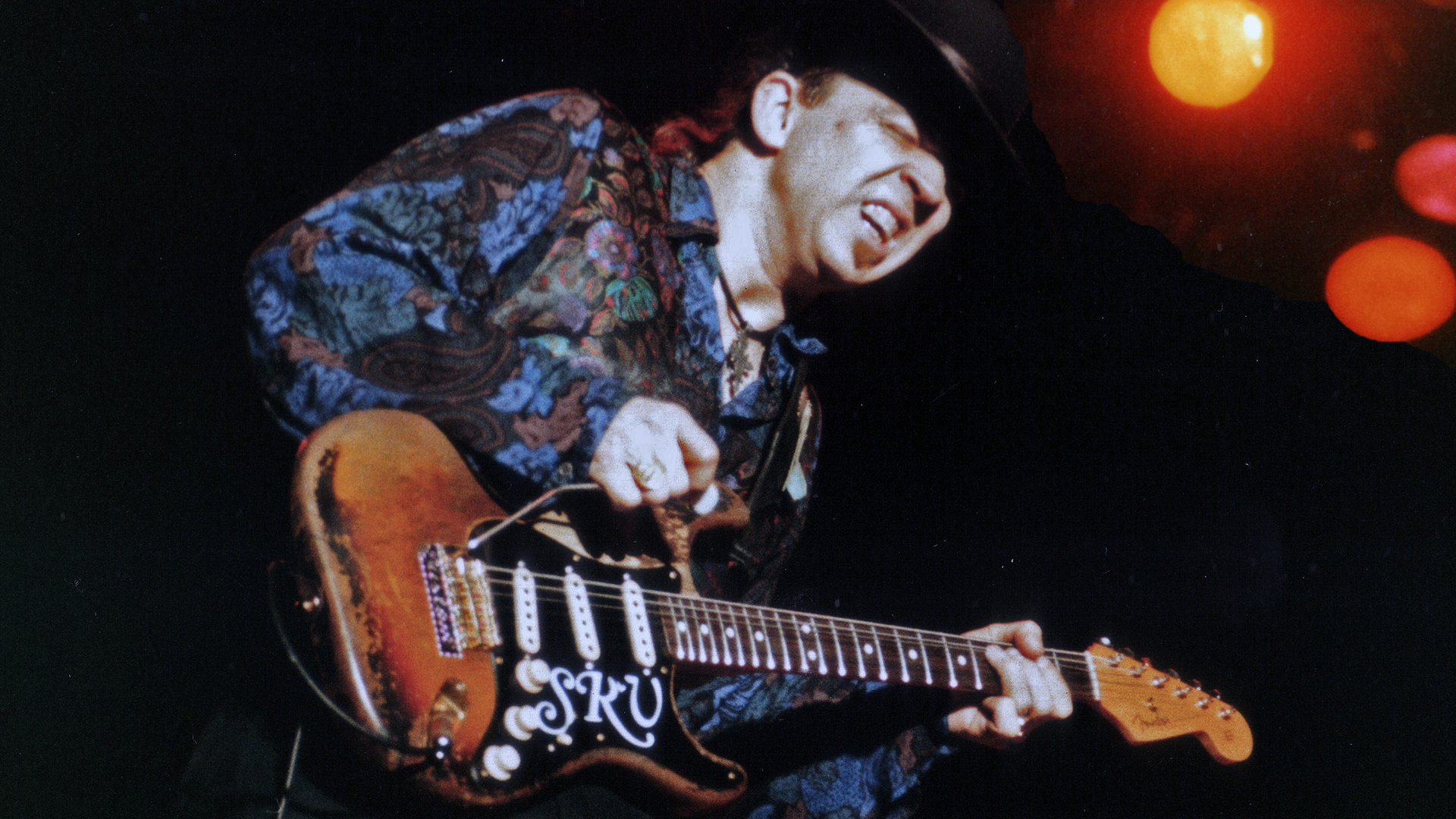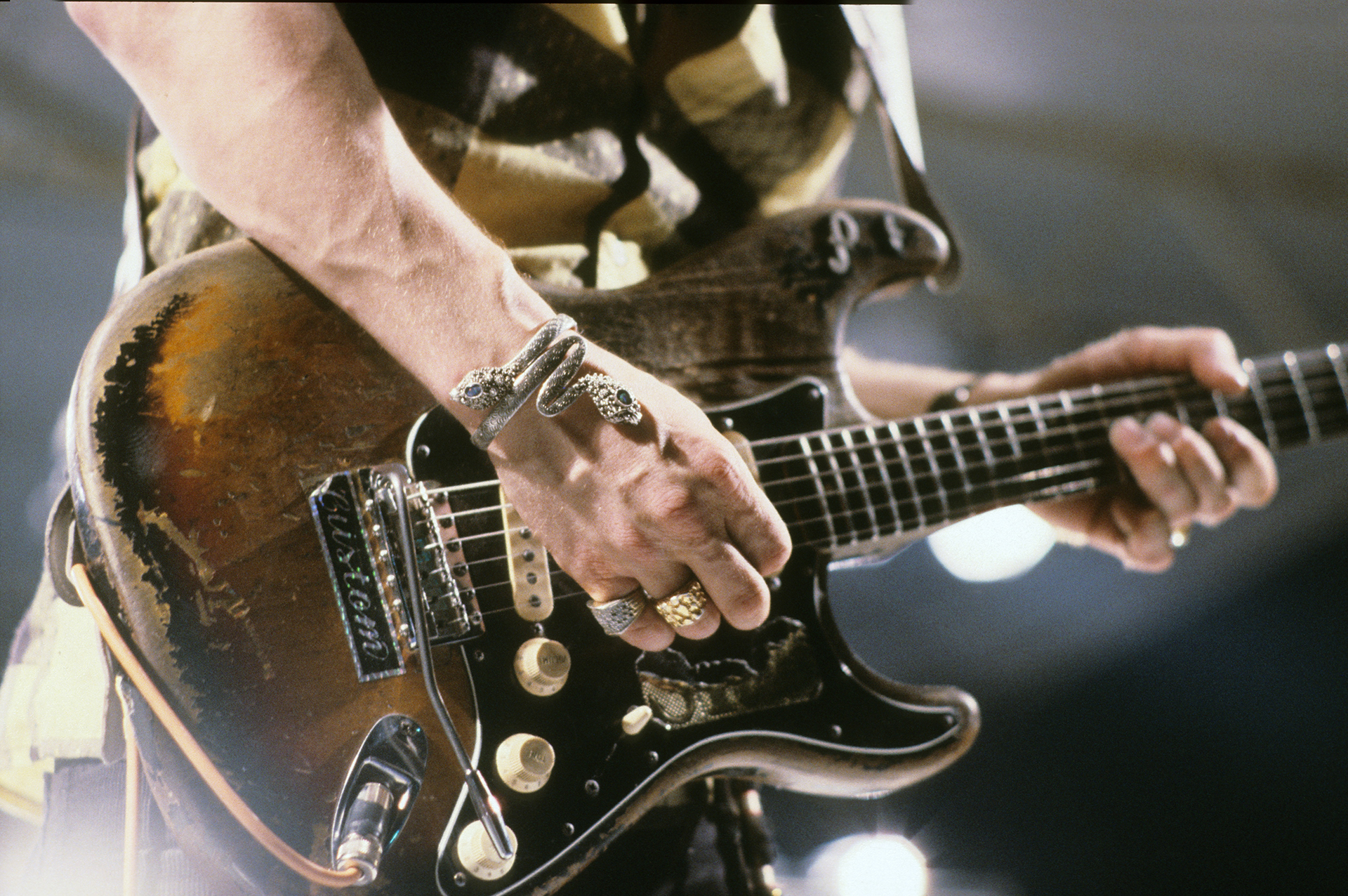“We were jamming on the last song, and he's pulling out this damn emery board!” Stevie Ray Vaughan explains the thinking behind his left-handed tremolo and why Albert King was filing his nails during Stevie’s guitar solo
Stevie revealed the stories behind both oddities in a now-historic 1984 interview with Guitar Player

Anyone who’s studied Stevie Ray Vaughan’s gear would have noticed the “upside-down” tremolo on his 1959 Fender Stratocaster. Dubbed “Number One” and “First Wife,” the electric guitar was purchased from the owner of an Austin, Texas music shop in 1973. It was Stevie who replaced its right-hand whammy with a lefty.
While many have rightly assumed Stevie was emulating his left-handed heroes Otis Rush and Jimi Hendrix, there was more to it than appearances, as Stevie revealed to Guitar Player assistant editor Dan Forte in the magazine's October 1984 issue.
“Well, I started listening to people and noticed that when Otis Rush used one, he had it on the top — he played upside-down,” Steve said. “And Hendrix had the guitar upside-down, except he strung it regular.
"It seemed to me that the people who did that the best had it on top, so I moved mine.”
While Stevie liked the results, it caused difficulty with his clothing. “Sometimes it does get in the way,” he admitted. “I’ve had it tear my sleeve halfway off.”
As Forte pointed out, the position of the bar meant Stevie worked it with his palm, rather than his little finger.
“Yeah, and I've got the springs set up so I couldn't move it with my little finger anyway,” Stevie said. “It's pretty tight, with four springs tightened all the way up. That's how I can do ‘Third Stone From the Sun’ and still be in tune.
All the latest guitar news, interviews, lessons, reviews, deals and more, direct to your inbox!
“See, I have my old [’59] Strat set up where it won't go up at all. On my newer Strats, the vibrato handles are on the bottom, in the regular place. The orange one [his Hamiltone Strat, built by James Hamilton] and Lenny, the brown one [his circa '65 composite Strat], both of their vibratos will go pretty far up and down as well, and they're set up a lot lighter. All the guitars have personalities of their own and feel completely different. They each have different sounds.”
Of course Hendrix wasn’t the only influence on SRV’s guitar playing. Albert King was another big inspiration to him. When asked by Forte about King, Stevie shared a story about the time the two bluesmen performed together on December 6, 1983, at CHCH-TV studios in Hamilton, Ontario, Canada. Stevie was still an up-and-comer, and King initially refused to do the show because he didn’t know who SRV was. Eventually he realized he was “Little Stevie,” the skinny kid who used to sit in with him when he played in Austin.

The show in Hamilton was one of two collaborations between the men recorded for the TV program In Session. The intimate studio performance reveals how comfortable the two men were with each other, which also results in some hilarious moments.
At one point, during "I'm Gonna Move to the Outskirts of Town,” as Stevie solos, King casually stands up, retrieves his pipe and nonchalantly lights it.
During another of Stevie’s solos, King pulls an emery board from his pocket and begins filing his fingernails.
As Stevie revealed to GP, King had heard Stevie copping his licks on David Bowie’s Let’s Dance album and wanted to show him who the boss was at their performance.
“When that album first came out, Albert heard it,” Stevie told GP. “He said, "[sneering] Yeah, I heard you doin' all my shit on there. I'm gonna go up there and do some of yours.’
“We were doing this TV show right outside of Toronto-Hamilton, and during the lunch break, Albert went around to everybody in there looking for an emery board. I didn't think anything of it. We were jamming on the last song, ‘Outskirts of Town,’ and it comes to the solo, and he goes, ‘Get it, Stevie!’
“I started off, and I look over and he's pulling out this damn emery board, filing his nails, sort of giving me this sidelong glance. [laughs]. I loved it! Lookin' at me like, ‘Uh-huh, I got you swinging by your toes.’ He's a heavy cat.”
Have a look.
Christopher Scapelliti is editor-in-chief of GuitarPlayer.com and the former editor of Guitar Player, the world’s longest-running guitar magazine, founded in 1967. In his extensive career, he has authored in-depth interviews with such guitarists as Pete Townshend, Slash, Billy Corgan, Jack White, Elvis Costello and Todd Rundgren, and audio professionals including Beatles engineers Geoff Emerick and Ken Scott. He is the co-author of Guitar Aficionado: The Collections: The Most Famous, Rare, and Valuable Guitars in the World, a founding editor of Guitar Aficionado magazine, and a former editor with Guitar World, Guitar for the Practicing Musician and Maximum Guitar. Apart from guitars, he maintains a collection of more than 30 vintage analog synthesizers.
